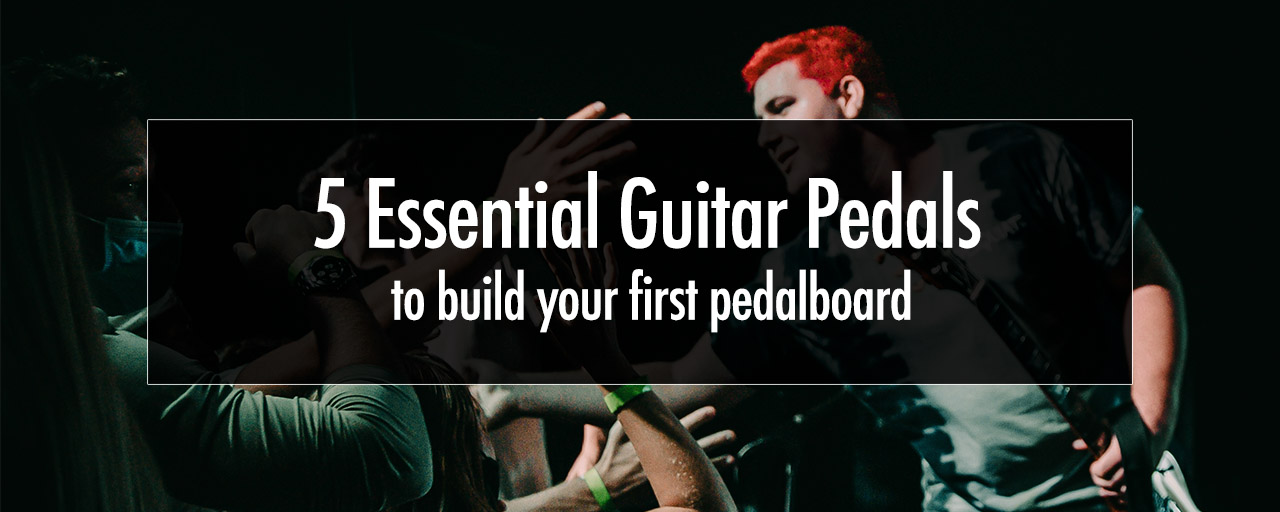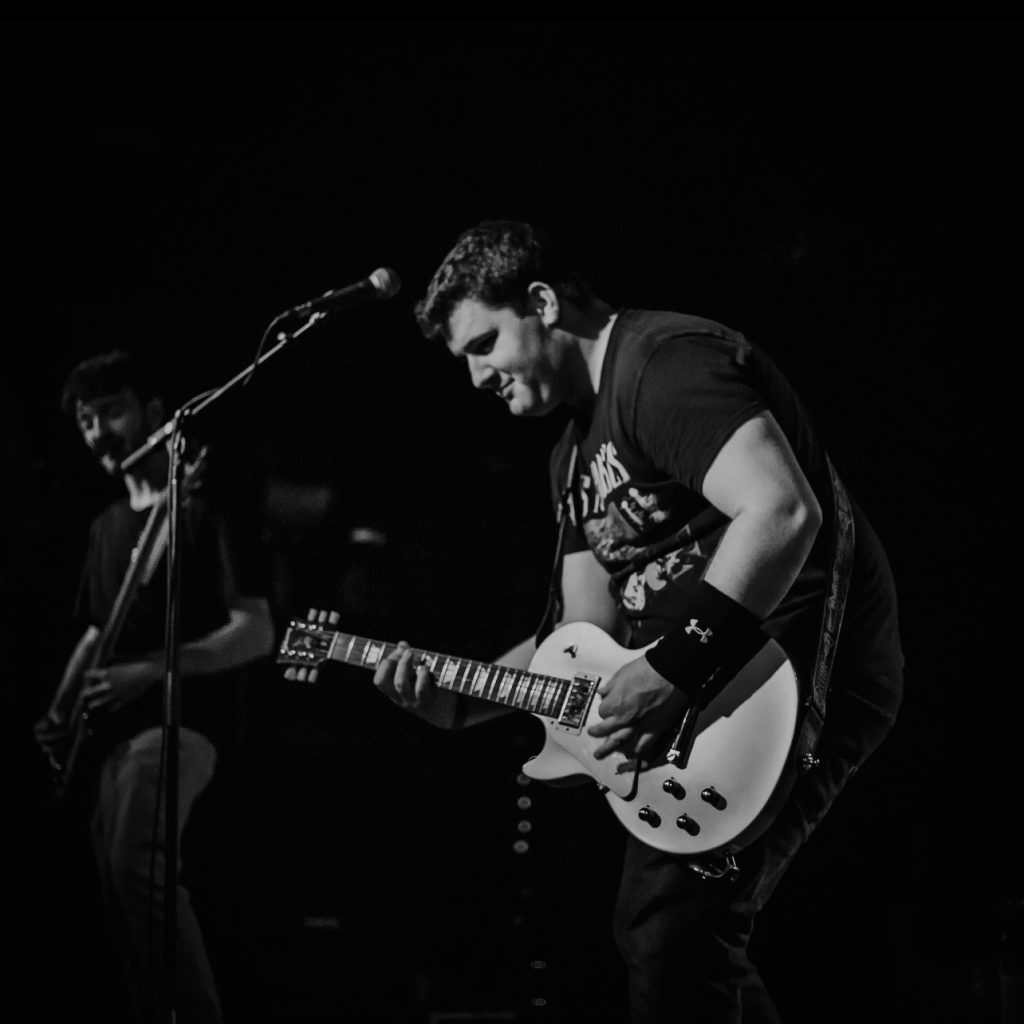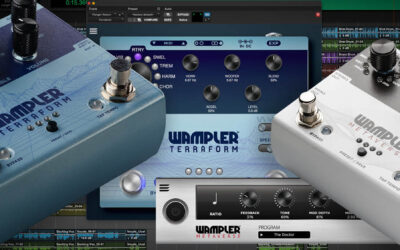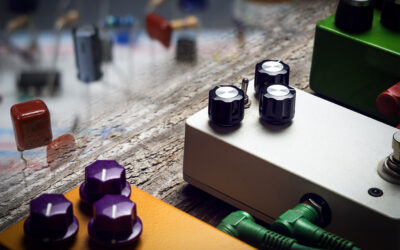
If you are new to the Electric Guitar and the wondrous rabbit hole of Guitar Effects Pedals, welcome, you are amongst friends here. We thought it would be kind of useful to give a perspective on building a first pedalboard for anyone that is new to the world of pedals, so we reached out to Brian’s nephew Kyle for his take on it. Kyle is a guitarist and vocalist in the band Red Letter Day based out of Gainesville, Florida. They recently released a single, “Dying to Stay”, on all streaming platforms – so go give it a listen! Kyle is currently attending college at the University of Florida. He has been playing guitar for 8 years and has had lots of recording and touring experience along the way. He recently attended NAMM Summer 2021 in Nashville with his band and hopes to attend in the future.
1.Tuner
Any combination of guitar pedals won’t cover up for the fact you are out of tune with the rest of your band. The greatest guitarist of all time would suck if they were out of tune for the whole set. All but the most tone deaf of audiences will notice if you are out of tune with the rest of the band, and if you are playing with a keyboard, that means to the nearest cent. Playing out of tune is one of the ultimate transgressions for a guitar player in a band and it is something that is easy to fix. Having a tuner on your board is an essential starting point. Not having one is the equivalent of playing guitar without strings. So do yourself a favor and save yourself the embarrassment of playing out of tune live. An incredibly affordable and reliable tuner pedal range is the BOSS Chromatic Tuner range. Find a tuner that fits your aesthetic and size requirements. The better ones will have extra features including switchable buffers and power outputs. This would normally be placed at the start of the chain.
2. Overdrive
Overdrive is another great asset to a guitarist. Whether you have a built-in overdrive or lead channel on your amp or not, it’s still a smart idea to have a different overdrive pedal on your board (you can use both amp and pedal overdrive to stack different gains). Regardless of genre, overdrive is a great accent to your sound that is required for every guitar player who wants to add some grit to their tone. The range of sounds that can be created from one overdrive pedal is mind-blowing, with a simple breaking crunch tone when you dig into notes, or full-blown metal crushing guitar tone. All from the same overdrive pedal. A great option would be the Klon™ pedal, which is a signature overdrive pedal for various overdriven guitar tones. However, money is tight these days, and most people don’t have thousands of dollars to throw around willy-nilly. If you want the same sound from a cheaper but still great option, the Wampler Tumnus™ is a great choice for an overdrive pedal on your board. (Editor’s note: Of course we are going to recommend that one…or this one or this one…). You will want to run this pedal after your tuner pedal but you can move it around when mixing with other gain related pedals to suit your ear.
3. Compression
Compression is often considered less of an essential, but its actually a great choice to include on your gigging pedalboard. The effect of compression on your tone is usually to squash or flatten the overall tone, so it brings the highs and lows closer to the middle. This is commonly used on clean tones and crunch tones. Country players have made this effect incredibly important to have on your board. This pedal would allow the player to vary their clean tone and change the style of playing, where finger-picking and chickin-pickin playing is conducive to this sound. One compression pedal that is great and affordable to have on your board is the Wampler Mini Ego™ Compressor, which is small but packs a lot of punch. Most people consider compressors to be their “lightest” gain stage and as such will run a compressor pretty early in their chain, often before the overdrive. Stacking a compressor and an overdrive is like combining coffee and cream.
4. Reverb / Delay
Some amplifiers will come with built in Reverb, either through digital emulation or an actual spring tank. If not then Reverb is an essential part of your arsenal to mimic the normal guitar tones of your favorite guitar players. Most players that want to smooth out and widen the endings to phrases on guitar will use a reverb pedal to accomplish this. Reverb pedals are way more versatile than just this effect, and are a more fun pedal to use if you want to get more experimental. There are plenty of alternate settings on reverb pedals, such as room, shimmer, hall, and lofi reverb styles, among others. A great and multifaceted pedal that is a great gateway reverb pedal is the Hall of Fame Reverb by TC Electronic. Equally, if you have reverb built into your amp, you should go to the next stage of time based effects and select a delay pedal. Delay gives you an echo effect that is deeper and more expansive than reverb. It is a whole subject on its own. You can also get combined reverb and delay pedals – like the Wampler Ethereal™ – which give you both effects in a single pedal. Normally you would connect time based effects to the effects loop of an amplifier if you have one built in. If not you can run them at the end of your pedal chain.
5. Modulation
Modulation pedals are by far the most varying type of pedal, with countless types of modulation effects to choose from. The common effects on pedalboards are chorus, flanger, phaser, vibrato, tremolo, u-vibe, and rotary. A modulation pedal changes the landscape of your tone continuously. Modulation effects are commonly used by lead players to allow their lead playing to pop. The best example of this with a famous player is probably Eddie Van Halen with the phaser. The iconic tone of his lead playing and guitar solos like “Eruption” is boosted with the modulation effect, allowing his solos to stand out amongst the other players in the band. Because of how iconic this tone is, it’s only right to recommend purchasing the MXR Phase 90 pedal. This is the exact pedal that EVH used to create his iconic guitar solos (not the EXACT one, though. That one is probably in a museum somewhere).
Now that you guys know the essential pedals to buy, buy them and then go on a spending spree with all of this knowledge about pedals you’ve unlocked. You’ll thank me later. Actually, probably not (we’ll all be in crippling debt after). I’ve only just touched on the essentials here though, there is a vast amount of choice in the pedal world today, so go and pick up some new toys and have some fun playing 🙂




Is there a best place to put the tuner? Which of the following is the best:
1. First in chain because of buffer or clean signal?
2. Side in chain so it does not affect the signal?
3. After the overdrive or at the end of chain so you can use it to silence when needed?
Other considerations?
Normally First in chain or Side in chain if using a switcher is where I would put my board tuner.
Does it really matter the order in which the pedals are connected? Because I have connected my pedals in a different order every time, having a similar outcome.
In the main, no, but some pedals are very fussy – but generally – if it sounds good to you go for it!
First in chain for two reasons.
1. Cleanest signal for most accurate tuning.
2. Can be used to completely cut the signal.
Tuner > Dirt > Reverb >
Great explanation about the different effects there are with pedals!
Appreciate your input and being brand neutral. It would be a great help if Wampler would have a catalog of its inventory mapping iconic or reputable alternatives for beginners ( for example Tumnus for Archer?) and grouped by style of music (amp voice?). Thanks.
Hey Douglas:
I think that’s a lot to ask because of the sheer number of pedals that exist, certain iconic pedals that have an extremely high number of copies and variants, and the variety of tones a good guitarist can coax out of certain models of amps.
Here are some resources you might consider looking into:
equipboard.com (a “Wiki” list-style guide to gear pros used)
reverb.com/guide (page down 5 times to get to guides for buying effects)
musicradar.com
JHS YouTube channel (great shows on pedal history, makers, and categories)
Wampler YouTube channel
Pete Thorn YouTube channel (highly recommended player’s perspective)
Johan Segeborn YouTube channel (for iconic amps and more)
Premiere Guitar rig rundown series on YouTube
That Pedal Show on YouTube
Rick Beato on YouTube
Vertex Effects channel on YouTube
Pedal discussions on The Gear Page (a lot of them are old, but a lot of good cheap used pedals are old, too).
There are a number of others that have really good information. They’ll show up in your suggested videos in the column to the right on YouTube, or in your search results on search engines (search things like “favorite klon variant” or “stacking overdrives” or “best amp in a box pedal”). I can’t name them all, and there are a couple I’d rather not mention. Anyway–once you start looking, the good channels and sites will find you.
I’m just dipping my toesies into the diy world and my mind is leaking with ideas. I’m wondering what is the simplest modulation pedal schematic to diy and learn the basics from?
Has Wampler Pedals ever thought about taking a collection of users pedal settings then use the widely used ones and posting the most common results?…like a quick users guide online. Just asking
Quick question…would you choose an eq pedal rather than a tuner pedal when starting your pedal board?
No, the eq pedal is meaningless of your guitar isn’t tuned.
I like the pedals listed and have at least one of each; however, there are a couple of pedals mentioned that are well above novice pedalboard stomps; compression? I know established guitarists that still don’t understand a envelope/Autowhah/composer! Compression pedals are absolutely a awesome addition to any rig- I have one before my dirt pedals(Q-Tron Plus) and one at the end of the Fx Loop signal chain before the amp return- (Donner Compression) These are very useful and also highly voice and color killing if not familiar with how these work; what their purpose and benefits are and are not!
Second, I believe a chorus pedal is a fun pedal for beginners; be it a Donner or Electric Harmonix, MXR or TC Electronics- they all have great boutiques for the most part and an excellent way to begin wave shaping and coloring! Just me and my humble opinion!